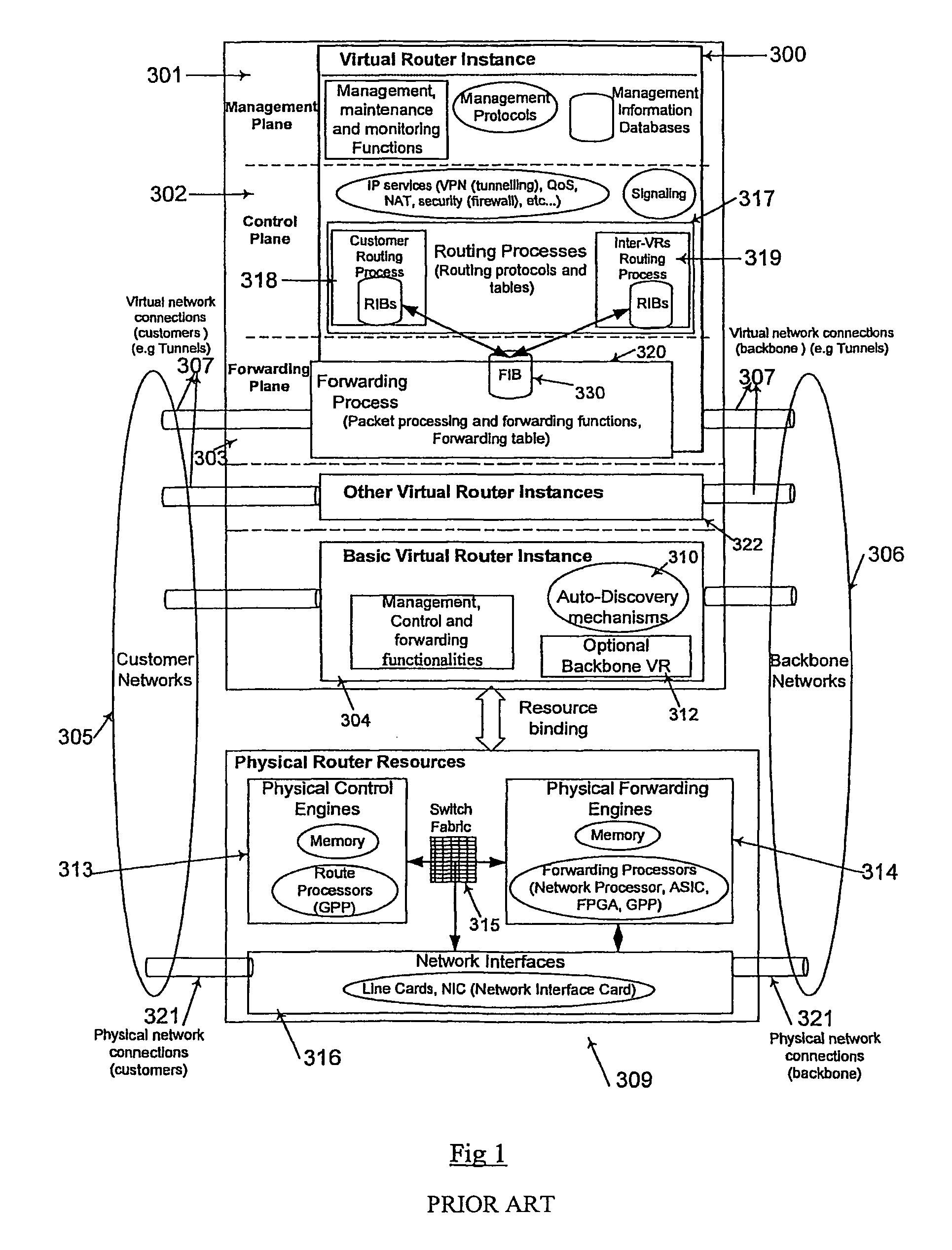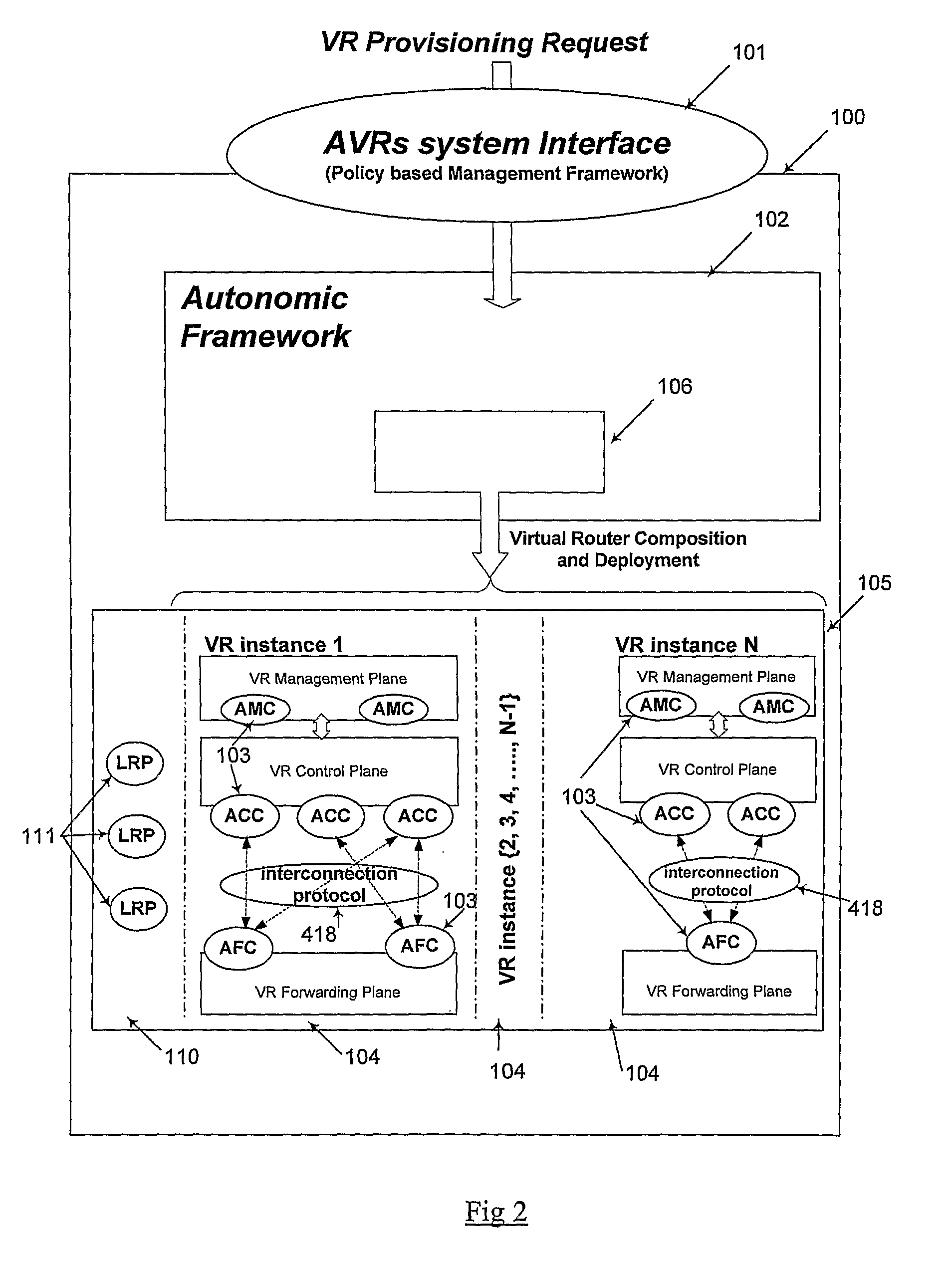Autonomic network node system
a network node and node technology, applied in the field of network communication and network virtualization technology, can solve the problems of unfavorable vns customers, unfavorable vns customers, and high achieve the effect of saving time and reducing the cost of manual vnsp involvemen
- Summary
- Abstract
- Description
- Claims
- Application Information
AI Technical Summary
Benefits of technology
Problems solved by technology
Method used
Image
Examples
Embodiment Construction
[0184]In order to support automated provisioning processes of virtual routing services in VNSP edge routers, an autonomic network node system for providing programmable and autonomic virtual routers (AVRs) may be required:[0185]to enable the VNSP to automatically set up virtual router instances and IP services, in its physical edge router, to support virtual routing services based on customer-specific information and configuration in a cost-effective, flexible, fast and dynamic manner. Manual interventions may not be needed by the VNSP manager for the services provisioning process. This may reduce cost and management complexity for VNSPs and speed up routing service provisioning time. Following on demand virtual routing service queried by the VNS customer, the VNSP manager sends VR provisioning requests (including new VR installation, VR configurations or VR removal) to its edge routers supporting the autonomic network node system. The autonomic network node system may self-manage, ...
PUM
 Login to View More
Login to View More Abstract
Description
Claims
Application Information
 Login to View More
Login to View More - R&D
- Intellectual Property
- Life Sciences
- Materials
- Tech Scout
- Unparalleled Data Quality
- Higher Quality Content
- 60% Fewer Hallucinations
Browse by: Latest US Patents, China's latest patents, Technical Efficacy Thesaurus, Application Domain, Technology Topic, Popular Technical Reports.
© 2025 PatSnap. All rights reserved.Legal|Privacy policy|Modern Slavery Act Transparency Statement|Sitemap|About US| Contact US: help@patsnap.com



